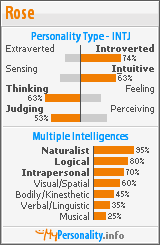My post on Stithians Reservoir made me think - Cornwall being a long, long pointy bit of land that sticks out into the sea has lots of more impressive lost lands than the little bit lost to a reservoir. Maybe this is why no one seems interested in the lost homes of Stithians? Why mourn a few houses when you have legendary cities and the lost land of Lyonesse?
At the far end of the land there is an area called Penwith and it's major town is Penzance. Penzance sits in a large bay called Mounts Bay and in the bay sits St Michael's Mount. This is a rocky island that can be reached across a causeway at low tide but at other times is reached by boat. There is a harbour and houses on the mount but at the top there is a grand castle. The old Cornish name for the Mount is Careg cowse in clowse which means the hoary rock in the woods. When large amounts of sand have been removed from the beaches by storms, the buried remains of trees have been found.
From Penwith the sea now stretches 26 miles from Land's End to a set of Islands known as the Scillies. Six of the 140 islands are inhabited. The Romans however referred to them as Scillonia insula in the singular. The Greeks and Phoenicians visited the Cassiterides or Tin Isles but there is no tin in the present day Scillies. Strabo, a Roman Geographer records there being ten islands in the Cassiterides. Solinus of the fourth century records there being a large island called Silura off the Cornish coast and it is likely that this island is now the Scillies.
It seems likely that off Penwith there was a single large island called Silura which in turn had several smaller islands off it's coast. Silura was apparently separated from the mainland by a strait with turbulent and dangerous waters. The Silures were known for their hard work and their piety.
It seems that at first the widening of these straits was gradual but the final inundation was dramatic and sudden and there was much lose of life as several large towns were destroyed with a sole survivor escaping on a white horse. Three families claim this ancestor was theirs. The first is Trevilians whose family crest commemorates his escape Another, the Lord of Goonhilly, came on shore at Sennen Cove and built the Chapel Idne there. A third was a member of the Vyvyan family.
Goonhilly is an area of land on the nearby Lizard peninsula but it seems the Lord of Goonhilly may have been the Lord of Goonbily. It means salt water downs and was a name applied to Ennor the area where the Eastern Isles remain. One of these isles is still called Ganilly and the old name for Sennen is Porth Goonhilly or Port for Ganbily and this was probably the main port of the area.
The land that was lost was said to be very fertile with several woods with several large towns. Records indicate that 140 parish churches were lost but some dispute this and have reduced the number to 40.
There is of course a great deal of dispute as to whether all this really did happen. Science admits that the Scilly Isles would have at one time been much, much larger but the lost land of Lyonesse? Science has trouble with that and some feel the histories recorded show the local memories retained from neolithic times when the innundations would have been more likely to have happened.
I think one reason that science struggles so much with Lyonesse is it's link to Arthurian legend. It seems Mordred chased the remainder of Arthur's men through Cornwall to Lyonesse following the battle of Camlann in which Arthur was killed. The ghost of Merlin travelled ahead of Mordred and when they reached the low valley in the middle of Lyonesse, Merlin turned into a cloud and caused a deluge. Mordred was lost along with his army but the pitiful remnant of Arthur's men were safe on the hill tops that beame the Scillies. They were so grateful for their deliverance that they founded a religuous site which eventually became the Abbey on Tresco.
You can read more here and here.
The New Cottagesmallholder HQ
1 year ago







Interesting articles rose... think the abundance of legends must have a basis in fact somewhere. fascinating stuff.
ReplyDeleteAnd there is more to come....
ReplyDelete